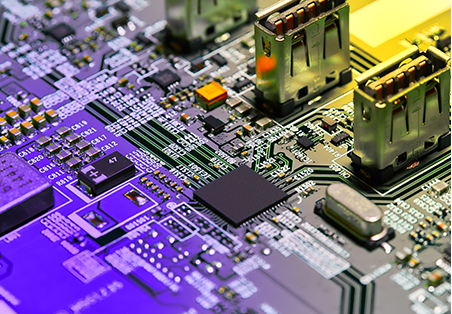SLP technology-PCB's highest technology, great potential in the future
As the construction of 5G base stations reaches a certain scale, the pattern of the smartphone market will change. The advent of 5G will completely overturn the network performance of past mobile phones in the 4G era, and will attract consumers' demand for replacement.
According to Strategy Analytics, 5G smartphone shipments will increase from 2 million units in 2019 to 1.5 billion units in 2025, with a compound annual growth rate of 201%.
Nowadays, the development of mobile phones is becoming more and more intelligent, light and thin, which means that the internal components of mobile phones will also be further reduced or integrated. Under this development trend, flexible boards (FPC) and carrier-like boards (SLP) in PCB circuit boards have the opportunity to be further promoted and applied.
According to data in 2018, the global PCB output value reached 63.5 billion U.S. dollars, and the FPC output value rose to 12.7 billion U.S. dollars, becoming a relatively fast-growing project in the PCB industry, and China's FPC market accounted for about half of the world.
At present, the scale of FPC in the Chinese market has grown to RMB 31.6 billion. It is estimated that by 2021, the Chinese FPC market has a chance to reach RMB 51.6 billion, with a compound annual growth rate of 10%.

Nowadays, mainstream Chinese brands use 10-15 pieces of smart phone FPC, while the consumption of iPhone X is as high as 20-22 pieces. It can be seen that there is still a lot of room for improvement in the usage of Chinese smartphones in FPC. At the same time, the single value of FPC has reached 10 US dollars, and the amount is still rising.
FPCs are widely used in smart phones for the connection between components and motherboards, such as display modules, fingerprint modules, lens modules, antennas, vibrators, and so on. With the penetration of fingerprint recognition, the shift from dual-lens to triple-lens, and the use of OLEDs, the usage of FPC will continue to increase.
PCB highest craft: SLP
Smart phones have developed from 4G LTE to 5G all the way, and Massive MIMO antenna configuration has become increasingly complex, which also makes the RF front-end occupy more space in 5G smart phones. In addition, the amount of data processed by the 5G system will grow geometrically, which will also increase battery capacity requirements, which means that PCBs and other electronic components must be compressed to complete packaging in a higher density and smaller form.
And this evolution pushes PCB HDI technology toward thinner, smaller, and more complex processes. From the perspective of recent mobile phone designs, the minimum line width/line spacing requirement has been reduced from 50μm in previous generations to 30μm at present, which gave birth to a process technology similar to carrier board (SLP).
Leading this technology trend is Apple. Starting from iPhone 8 and iPhone X, iPhone adopts SLP technology with smaller line width and line spacing, leading the HDI market toward the development of similar substrates.
Although the current SLP market is overly dependent on the growth of high-end smartphones, especially the Apple iPhone and Samsung Galaxy series. However, after Huawei launched the P30 Pro equipped with SLP technology in March 2019, it is expected that SLP technology will continue to grow until 2024 under the follow-up adoption of major mobile phone manufacturers around the world.
In addition, as the number of leading OEMs adopting SLP continues to increase, mobile phone manufacturers are planning to adopt SLP in other consumer electronic products such as smart watches and tablets, which will also significantly drive the growth of the SLP market.
According to Yole's statistics, in 2018, the global SLP market was worth US$987 million. In 2018, the proportion of SLP technology used in global mobile phone shipments was only about 7%, and the proportion of corresponding output value was about 12%. Yole predicts that by 2024, the proportion of mobile phone shipments using SLP technology will increase to 16%, corresponding to about 27% of the output value.
From the perspective of production technology, SLP technology is currently dominated by Taiwan, South Korea and Japan. Japanese companies such as Meiko and Zhending are expanding their SLP production lines to Vietnam and China. With the transfer of technology, PCB factories in mainland China will gradually master the know-how of SLP.
Since 5G uses higher frequencies, stricter impedance control is required. If it is not formed in an extremely precise way, the thinner lines of HDI may increase the risk of signal attenuation and reduce the integrity of data transmission. At present, PCB manufacturers mainly solve this problem through MSAP manufacturing.
Today's line width/spacing requirements have been reduced to 30/30µm, and it is expected to be further reduced to 25/25µm, or even 20/20µm. The MSAP process can fully support these needs.
At the same time, the SLP value of the MSAP process is more than twice that of the high-end Anylayer, which can bring huge profits to related PCB manufacturers.
Compared with the past, the advanced carrier board market has undergone tremendous changes. The development of high-density fan-out (HDFO) technology and the continuous reduction in the size of IC carrier boards will reduce the demand for carrier boards. However, although in terms of quantity, the future PCB market will not have too obvious growth, but the added value brought by new technologies will be the main force to push up the output value of PCB.